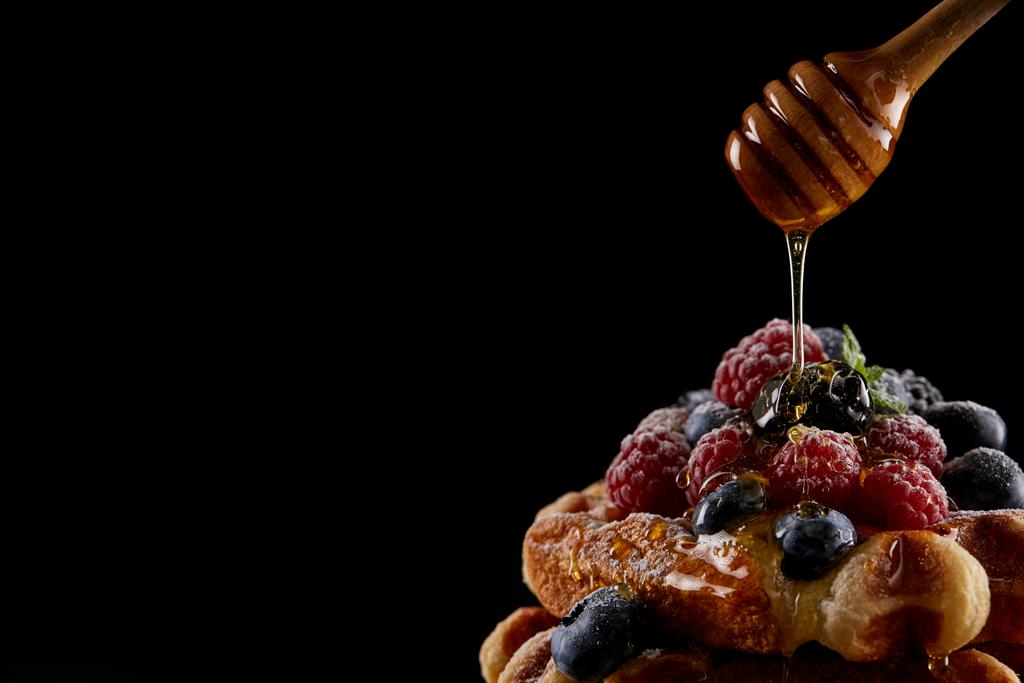Bees suck the nectar from flowers and make honey, right? Not quite. Forest honey is not obtained from flower nectar, but from honeydew. In this guide you will find out what it is and how forest honey is produced.
Forest honey does not consist of flower nectar
In general, honey is divided into blossom honey and honeydew honey, which is also called forest honey.
While blossom honey mainly consists of blossom nectar, the bees collect the so-called honeydew for forest honey.
Honeydew is a sugary substance and is excreted by plant-sucking insects, particularly plant lice. They feed on the sap of various deciduous and coniferous trees.
The name forest honey comes from the fact that honeydew is mainly found on forest trees such as spruce, oak and fir.
Forest honey and blossom honey – differences in detail
In addition, honeydew and forest honey differ from blossom honey in a number of aspects:
Appearance: Forest honey is dark in colour, blossom honey is (depending on the variety) significantly lighter.
Taste: Compared to blossom honey, forest honey tastes stronger, somewhat spicy and tart, often with a malty note.
Consistency: Forest honey often has a firmer consistency, but stays liquid longer than blossom honey.
Constituents: Forest honey contains less glucose and fructose than blossom honey. Instead, it is 25 to 55 percent sucrose. In addition, forest honey provides more minerals and trace elements than blossom honey, according to the Bavarian consumer advice center.
Health: Since forest honey contains more minerals and trace elements, but also essential oils, it is generally considered to be the healthier honey. However, an Austrian study from 2007 showed that free radicals in the body are bound better with blossom honey than with forest honey.
Fir honey – a special forest honey
A real rarity is fir honey, which is also a honeydew honey. The honeydew is extracted from silver fir trees. The colors of the honey can range from dark brown to green-black, while the taste has an unmistakable note of fir. This honey is particularly rich in healthy essential oils, which is why it is considered a good home remedy for bronchial diseases.

